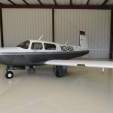Night Flying
-
Members Online
- TangoTango
- tperkins92
- ta2too
- Yetti
- Modify201
- shawnd
- Peter T
- Sabremech
- M20F
- Ragsf15e
- Alan Maurer
- thomas1142
- acekng1
- Greg Ellis
- jsclafani
- Skyland
- spaceman39a
- Guy123
- katzhome
- skykrawler
- Rmfriday
- larryb
- Nico1
- 65MooneyPilot
- rturbett
- eman1200
- N201MKTurbo
- DanM20C
- WheelPantsOff
- 1980Mooney
- Rick Junkin
- exM20K
- PT20J


Recommended Posts
Join the conversation
You can post now and register later. If you have an account, sign in now to post with your account.